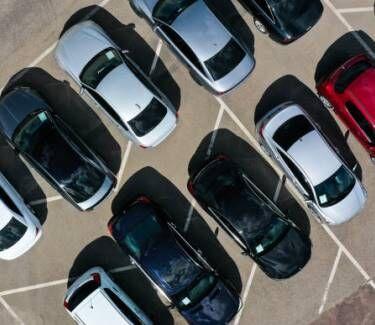Valery Sharifulin
Source: www.insideradio.com, April 2023
Auto dealers challenged during the COVID era may have more reason to advertise in the coming months. According to S&P Global Mobility’s automotive forecast for 2023, the combination of more cars on lots and lower prices could heat up automaker competition closer to levels seen before the pandemic.
“We’re in the formative stages of inventory rebuilding, following six months of year-over-year increases that ended 35 months of year-over-year declines in July 2022,” Joe Langley, Associate Director of Research and Analysis for S&P Global Mobility’s North American Light Vehicle Forecasting & Analysis team, says. “The surprise of 2023 will be vehicle availability. It will still be well below industry norms, but inventory for the spring selling season will be up 50-70% from 2022 levels.”
S&P’s analysis of inventory data shows that as supply chain issues have eased, advertised new-vehicle dealer stock at the end of December 2022 was up 91% compared to February, 43% vs. August, and 21% vs. October. “This could mean a big win for consumers still in the market for a new or used vehicle, and who are not intimidated by sharply increased lending rates or other economic headwinds,” S&P Global Mobility Executive Editor Mark Rechtin says. “Already there are signs of increased new-car inventories and declining used-car prices – though not yet to pre-COVID levels.”
Levels of inventory recovery differ from brand to brand. According to S&P’s report, Ford, Chevrolet, Ram, and Jeep accounted for 71% of 2022 advertised inventory listed by mainstream brand dealers in December, benefiting from the U.S.’s Big Three – GM, Ford and Stellantis – having better handled supply chain issues. Japanese brands have continued to struggle in this area, however, while Korean automakers Hyundai and Kia are still challenged by not having enough factory capacity to meet growing demand.
“Jeep, GMC and Mazda are now showing a broad availability of vehicles,” S&P Global Mobility Associate Director of Innovation Product Management for in-market reporting Matt Trommer says. “Other brands such as Honda, Kia and Subaru, however, are showing more limited availability.”
As for the used car market, S&P sees further consumer benefits as inflated values head back to Earth. As a result of COVID halting new car manufacturing, thereby increasing demand and prices for used cars, average weekly dealer listing prices soared from a pre-pandemic $19,000 to an eventual high of $29.025 in Q1 2022, according to S&P Global Mobility division CARFAX, which shows used car prices down to an average $27,239 at mid-December.
Figuring in the economic outlook factor – with a sharp rise in U.S. lending rates, and inflation leading to lower disposable household income – paints a less rosy picture for the auto market. “Ongoing supply chain challenges and recessionary fears will result in a cautious build-back for the market,” Chris Hopson, Manager of North American light vehicle sales forecasting for S&P Global Mobility, says. “U.S. consumers are hunkering down, and recovery towards pre-pandemic vehicle demand levels feels like a hard sell. Inventory and incentive activity will be key barometers to gauge potential demand destruction.”
As a result, Rechtin says, “spring and summer of 2023 could force automakers into aggressively pursuing customers with incentives while attempting to maintain the healthy profit margins they have seen for the past two years.”

